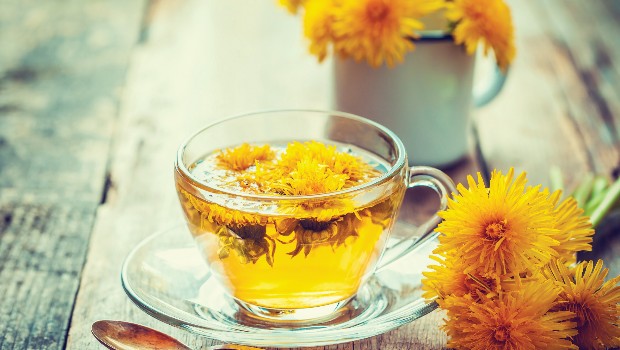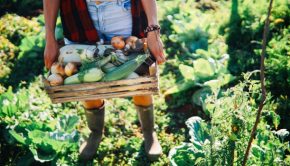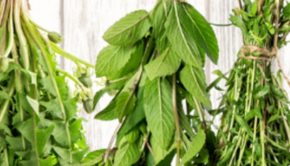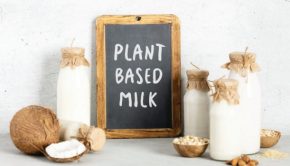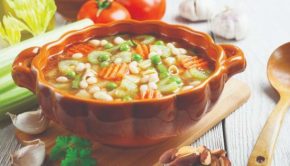FLOWER POWER
Botanical Libations Pack Healthy Punch
by April Thompson
Flowers and other budding botanical elements this spring aren’t just eye candy to dress the table; they can bless an everyday beverage with intoxicating new scents, flavors and colors. “It’s such a joy to see a beautiful flower or plant, smell it and then add it to a delightful beverage or meal. Plants have so much medicine to share, and it’s fun to play with that,” says Myra Sinnott, an aromatherapist and owner of Essential Botany, in Washington, D.C.
Many beverage favorites can be given a floral twist with little effort, says Cassie Winslow, author of Floral Libations: 41 Drinks + Ingredients and founder of the blog DecoTartelette.com, in Santa Cruz, California. Winslow’s go-to drinks include lavender-infused lemonade and rose petal almond milk, which can be served hot or cold. “I also love an iced lavender café au lait. If I’m feeling extra fancy, I’ll use fresh flower ice cubes, too.” Dried hibiscus is another favorite of Winslow’s, as even a few petals of the concentrated dark magenta flower will brighten and beautify any beverage—even a yogurt-based drink.
While many botanical drink recipes call for simple sugar syrup, Winslow suggests honey with a splash of water as a substitute. Other drinks are naturally sweet, like jasmine tea steeped in apple cider.
Sinnott likes to fuse the power of flowers with other botanical elements such as rose petals in a light raspberry drink. “I also use rosewater in a warm elixir with a base of reishi mushroom tea, goji berries, turmeric, cinnamon and ginger, cacao, pearl powder and honey. Rose is a heart-opener and vitalizes the body with the immune-boosting reishi and the other tonifying ingredients,” says Sinnott.
Winslow stresses the importance of buying organic ingredients, as many flowers are sprayed with toxic pesticides—or better yet, home-grown. She suggests the tea aisle of natural food stores is a good place for procuring organic floral ingredients such as chamomile and jasmine, which often come unblended in whole form.
Dried flowers are easier to source and are often more potent than fresh, she says. “Fresh is pretty, but can be more subtle in flavor.” Her rose salt recipe, which can be used to rim drinks or seasonal dishes, calls for dried roses, which have a longer shelf life and won’t clump up like fresh petals.
Plants have so much medicine to share, and it’s fun to play with that. ~Myra Sinnott
Marie Viljoen, Brooklyn-based author of Forage, Harvest, Feast: A Wild-Inspired Cuisine, suggests using cold infusions rather than heat or boiling flowers to retain their flavors and aromas. She also recommends picking flowers early in the morning or late afternoon, when their scent peaks.
A Cup of Wildflowers
While botanical ingredients can be obtained commercially, it can be more fun—and frugal—to forage for them, suggests Viljoen, founder of the blog 66SquareFeet.blogspot.com. “It’s a lot of fun to go out to collect ingredients you cannot find in the store. You can experience unique textures, flavors and perfumes, and play with wild ingredients that have been all but forgotten,” she says.
Some of Viljoen’s seasonal foraged favorites include the fragrant elderflower, honeysuckle and common milkweed flower. “I like to capture milkweed’s fragrance and deep pink color in a wild soda or a sweet cordial.”
For newbie foragers, drink ingredients can be sourced as easily as herbs from a window box, like the antiviral thyme, which makes for a delicious wild soda made from a handful of herbs, sweetener and water left on the countertop a few days to lightly ferment and fizz. Another spring favorite, tender young spruce tips, has a sour flavor that ferments well with strawberries and rhubarb, says Viljoen.
The same recipe can also be used to make vinegar, a longer process resulting in a more enduring product with great botanical properties. “You can create a sipping vinegar, which is good to mix with seltzer or slow-cook with,” says Viljoen.
Whether botanical ingredients are foraged, bought or brought in from the backyard garden to be put in a hot tea, a cocktail or a cold brew, the magic is in the making. “Flowers are endless fun to experiment with, especially when added to everyday drinks and dishes. It brings life to the kitchen,” says Winslow.
April Thompson, a freelance writer in Washington, D.C., can be reached at AprilWrites.com.
Photo: Chamille Whiter/Shutterstock.com


